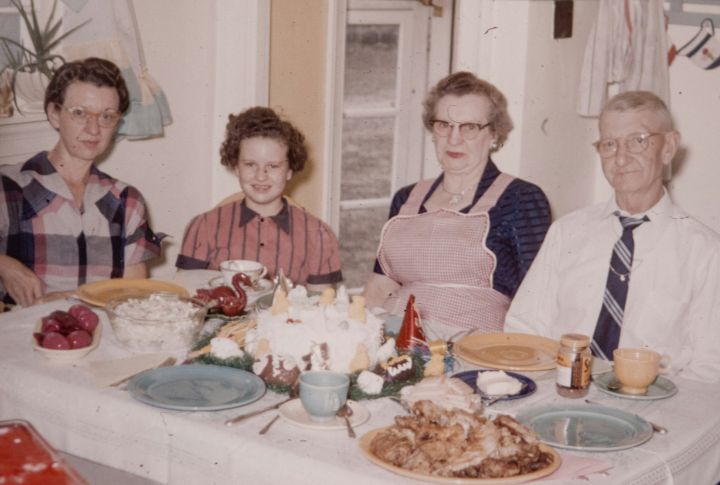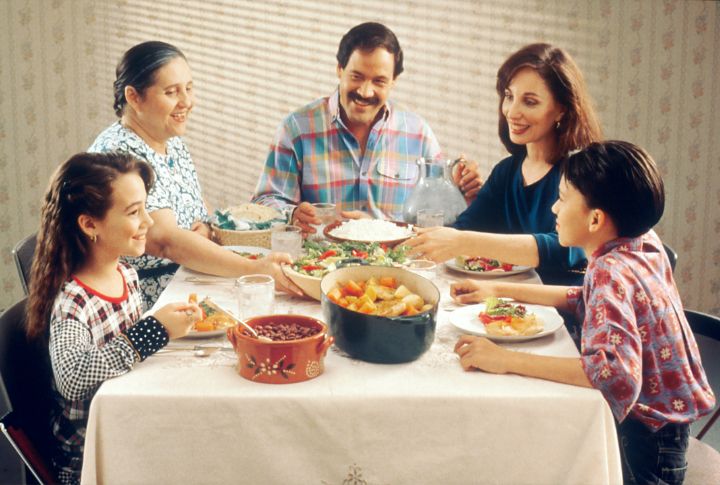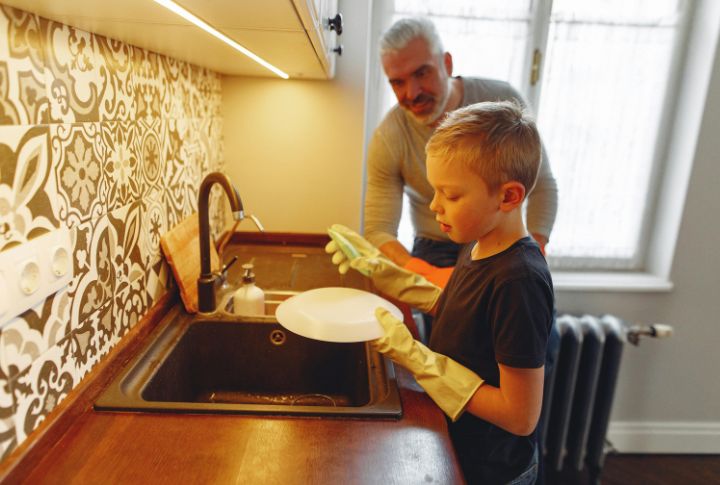
Dinner wasn’t just about eating in the 1960s—it was a lesson in discipline, respect, and tradition. Every bite came with unspoken rules, shaping how families interacted at the table. Some of these manners may seem strict today, but they once defined proper dining etiquette. So, let’s take a closer look at 20 table rules that every family lived by.
Always Ask Permission To Leave The Table

In the 1960s, children remained seated until formally excused. Parents expected a polite “May I please be excused?” before anyone could leave. This practice reinforced parental authority and taught children patience and respect during family gatherings, regardless of how eager they were to resume play or other activities.
Sit Still And Quietly

Adults swiftly corrected kids’ fidgeting, chair tipping, or noise making. Children learned to maintain proper posture throughout the meal, regardless of length. Parents viewed dinner as an opportunity to develop self-control and discipline, traits considered essential for success in school and future social settings.
No Elbows On The Table

Keeping elbows off the table wasn’t merely a suggestion but a strictly enforced rule. Children learned proper posture meant sitting upright with hands in lap when not eating. Parents would quickly correct this, often with a gentle tap on the offending elbow or a pointed look across the table.
Eat Everything On Your Plate

Children had to finish every morsel, reflecting post-war values about food waste. Their parents reminded them of starving kids elsewhere to encourage compliance. This rule taught an appreciation for food abundance but didn’t account for varied appetites or personal preferences that today’s families often acknowledge.
No Television During Dinner

Family dinners were a sacred time for conversation and connection. Televisions remained off, phones didn’t exist, and the focus stayed entirely on face-to-face interaction. Parents used this time to discuss daily events, share family news, and teach children the art of conversation and attentive listening.
Chew With Your Mouth Closed

Proper chewing technique was non-negotiable. Kids learned to take appropriate bites, chew with their mouths closed, and wait until they had swallowed before speaking. Parents would quickly correct noisy eating or visible food, making mealtimes an ongoing lesson in discrete, polite consumption.
Utensil Etiquette Was Essential

Children mastered proper utensil handling from an early age. Forks remained in the left hand, knives in the right. Utensils rested on the plate between bites, never on the tablecloth. Proper cutting technique meant cutting just one piece at a time, never the entire portion at once.
Dress Appropriately For Dinner

Families changed clothes before dinner, with fathers often still in work attire and mothers in dresses. Children weren’t permitted to wear play clothes but donned clean, presentable attire. This ritual elevated dinnertime beyond mere feeding to a dignified family ceremony deserving of proper respect.
Wait Until Everyone Gets Served Before Eating

No one ate until every family member got served and the host lifted their fork. This practice fostered patience and consideration, ensuring that meals began together as a unified family experience. The kids learned to control their impulses and show respect for others by waiting their turn.
Napkin In Your Lap

Upon being seated, napkins moved immediately from table to lap—never tucked into collars or shirts. Children learned to dab, not wipe, their mouths periodically and before drinking. This seemingly small detail underscored the importance of cleanliness and thoughtful dining behaviors throughout the meal.
No Speaking With Food In Your Mouth

Children quickly learned to finish chewing and swallowing food before contributing to the conversation. Their parents would halt any attempted speech with food present, teaching that clear communication required proper timing. This rule prevented both rudeness and potential choking hazards during family meals.
Hands On Lap When Not Eating

Between bites or during the conversation, hands remained in laps, not gesturing or fidgeting on the table, a practice that maintained a clean, orderly appearance and minimized distractions. Kids learned bodily control and patience, understanding that mealtimes demanded a particular standard of composed behavior.
Use Polite Language At All Times

Dinner conversation required “please,” “thank you,” “may I,” and “excuse me” consistently. Children addressed adults as “Mr.” or “Mrs.” even during family meals. This formal linguistic structure created respectful dialogue patterns and taught children to communicate with consideration regardless of familiarity or setting.
No Interrupting Adult Conversation

Children remained silent unless directly addressed, listening but not contributing to adult discussions. They learned to wait for natural pauses if they needed something urgently. This hierarchy taught patience and observation skills while reinforcing that children should respect adults’ communication priorities.
Ask For Food To Be Passed Politely

Reaching across the table was strictly forbidden, regardless of how close the desired item might be. The kids had to request, “Please pass the potatoes,” and always pass items right to left around the table. This system maintained order and prevented intrusions into others’ personal space.
Thank The Cook

After meals, everyone thanked the cook—usually the mother—for their efforts. Kids learned specific compliments about dishes rather than generic thanks. This acknowledgment taught an appreciation for domestic labor and helped children recognize the time and skill involved in feeding a family daily.
Clean Your Plate Yourself

Once excused, the children carried their own dishes to the kitchen, scraping leftovers and stacking plates as instructed. This responsibility started at five years old. Families viewed this task as building self-sufficiency and contributing to household functioning rather than making extra work for parents.
No Snacking Before Dinner

Afternoon snacks were limited or entirely forbidden to ensure proper appetite at dinner. Mothers prepared meals with the expectation they would be fully consumed and appreciated. This structure trained kids’ bodies to expect regular, substantial meals rather than continuous grazing throughout the day.
Always Use Proper Seating Arrangements

Every family member had an assigned seat that rarely changed. The father typically sat at the head, the mother at the foot near the kitchen, and the children arranged by age or gender between them. This predictable arrangement reinforced family hierarchy and created stability in daily routines.
Be Prompt To Dinner

Punctuality at mealtime was non-negotiable, with families gathering at the same time daily. Kids learned to listen for the dinner call and drop activities immediately, a behavior that taught time management and prioritization of family obligations over personal pursuits.
Leave a comment